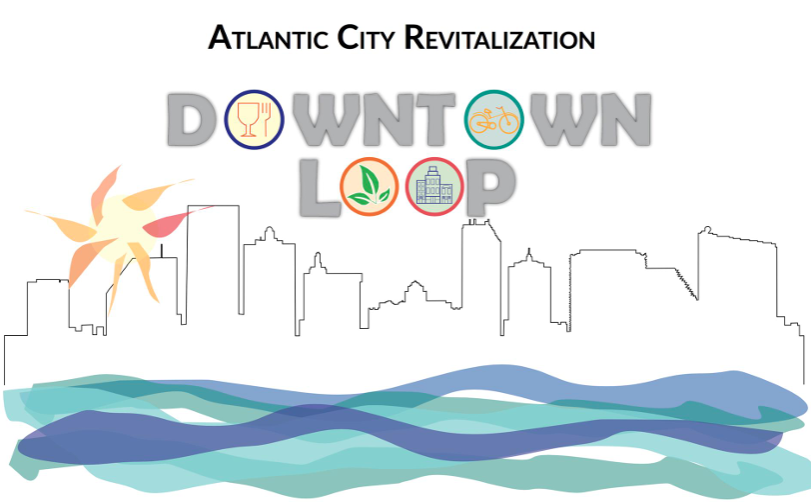In early April, a group of Bloustein School students traveled to Atlantic City to present two different neighborhood plans to the Atlantic City Planning Board. In front of an eager audience, the media, and the viewing public, Dan Brooks, Molly Coon, Katelyn Hansen, and Gabi Kappes presented and took questions for over an hour on the two presentations: the Downtown Loop and the Bungalow Park Neighborhood Plan.
Molly Coon and Gabi Kappes presented the Downtown Loop plan. Their presentation was an abbreviated version of a presentation created in their Fall 2015 comprehensive planning studio. This plan focuses on a small strip of land between Pacific Ave to the west, the boardwalk to the east, South Carolina Ave to the north and Dr. Martin Luther King, Jr Blvd. to the south. Within this square their team noted a variety of assets such as several historic properties, the presence of the boardwalk and the beachfront, and existing homes and businesses. However, the area also has many surface parking lots, vacant and boarded up buildings, poor pedestrian and vehicular connectivity, and is vulnerable to flooding. The plan focused on four objectives: creating a mixed-use neighborhood to attract and retain residents, increasing environmental resilience, spurring economic development, and improving the circulation and accessibility.
To accomplish these goals the team utilized three main strategies. The first was a form-based code, which would better integrate existing and new buildings with the plan’s objectives. The second was new street typologies and shorter pedestrian blocks, including the re-introduction of “snake alley”, an old pedestrian conduit through the area. Finally, the team designed a new park that would offer a new and different type of space in that area.
The second presentation concerned the Bungalow Park neighborhood, and it was the focus of the four students this semester.
Bungalow Park is a small, residential neighborhood in northeastern Atlantic City. It is almost completely residential, and is bordered on three sides by water. This neighborhood plan had five foci. The first was a redevelopment plan that identified all the vacant, abandoned, and non-conforming properties in the neighborhood. The second focus was to improve environmental resilience in the flood-prone neighborhood. Third, the plan aimed to improve safety, accessibility and circulation. Fourth, the students created an open space plan to increase the number of parks in the neighborhood. Finally, the plan included a cohesive branding and way-finding strategy that would unify the community.
Both plans were well received by the community. The mayor, the Planning Board, and Bungalow Park residents who arrived to see the new plan were effusive with their praise. Many commented that while the current focus on Atlantic City has been on its dire financial situation, plans like this gave the city a positive spin and something to work towards.
The studio report and presentation slides are available online.

